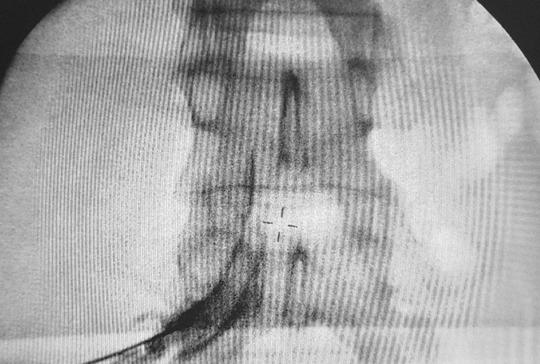Far lateral lumbar disc herniations (FLDH) consist approximately 0.7-12% of all lumbar disc herniations. Compared to the more common central and paramedian lumbar disc herniations, they cause more severe and persistent radicular pain due to direct compression of the nerve root and dorsal root ganglion. In patients who do not respond to conservative treatments such as medical treatment and physical therapy, and have not developed neurological deficits, it is difficult to decide on surgical treatment because of the nerve root damage and spinal instability risk due to disruption of facet joint integrity. In this study, we aimed to evaluate the effect of transforaminal epidural steroid injection (TFESI) on the improvement of both pain control and functional capacity in patients with FLDH. A total of 37 patients who had radicular pain caused by far lateral disc herniation which is visible in their lumbar magnetic resonance imaging (MRI) scan, had no neurological deficit and did not respond to conservative treatment, were included the study. TFESI was applied to patients by preganglionic approach. Pre-treatment Visual Analogue Scale (VAS) and Oswestry Disability Index (ODI) scores of the patients were compared with the 3rd week, 3rd month and 6th month scores after the procedure.
The mean initial VAS score was 8.63 ± 0.55, while it was 3.84 ± 1.66, 5.09 ± 0.85, 4.56 ± 1.66 at the 3rd week, 3rd month and 6th month controls, respectively. This decrease in the VAS score was found statistically significant (p = 0.001). ODI score with baseline mean value of 52.38 ± 6.84 was found to be 18.56 ± 4.95 at the 3rd week, 37.41 ± 14.1 at the 3rd month and 34.88 ± 14.33 at the 6th month. This downtrend of patient’s ODI scores was found statistically significant (p = 0.001). This study has demonstrated that TFESI is an effective method for gaining increased functional capacity and pain control in the treatment of patients who are not suitable for surgical treatment with radicular complaints due to far lateral lumbar disc hernia.





COMMENTS
0 comments